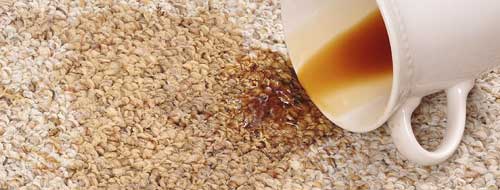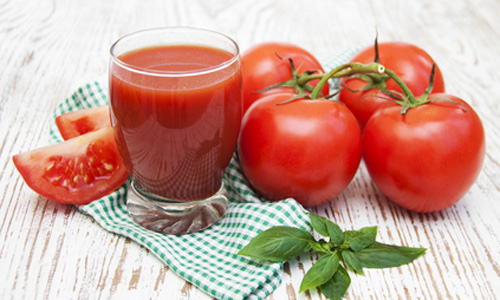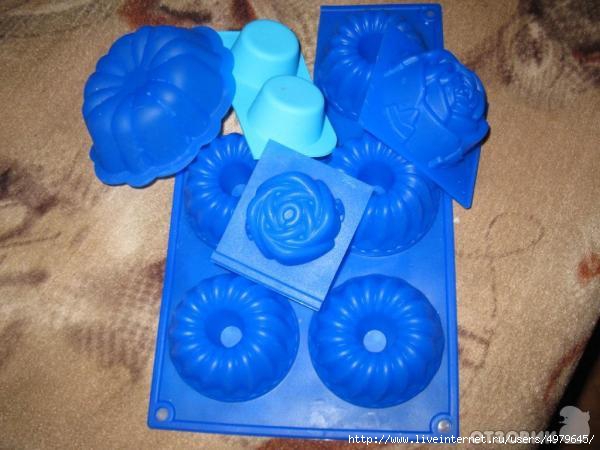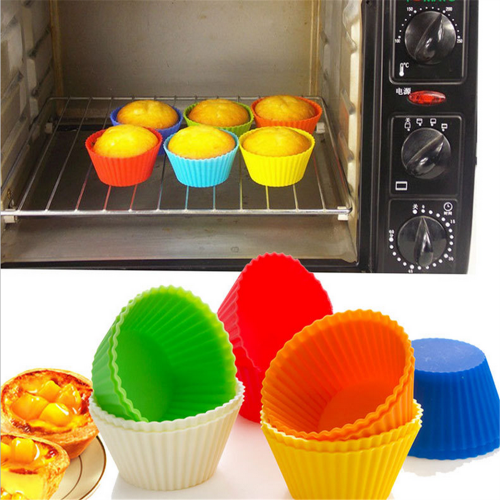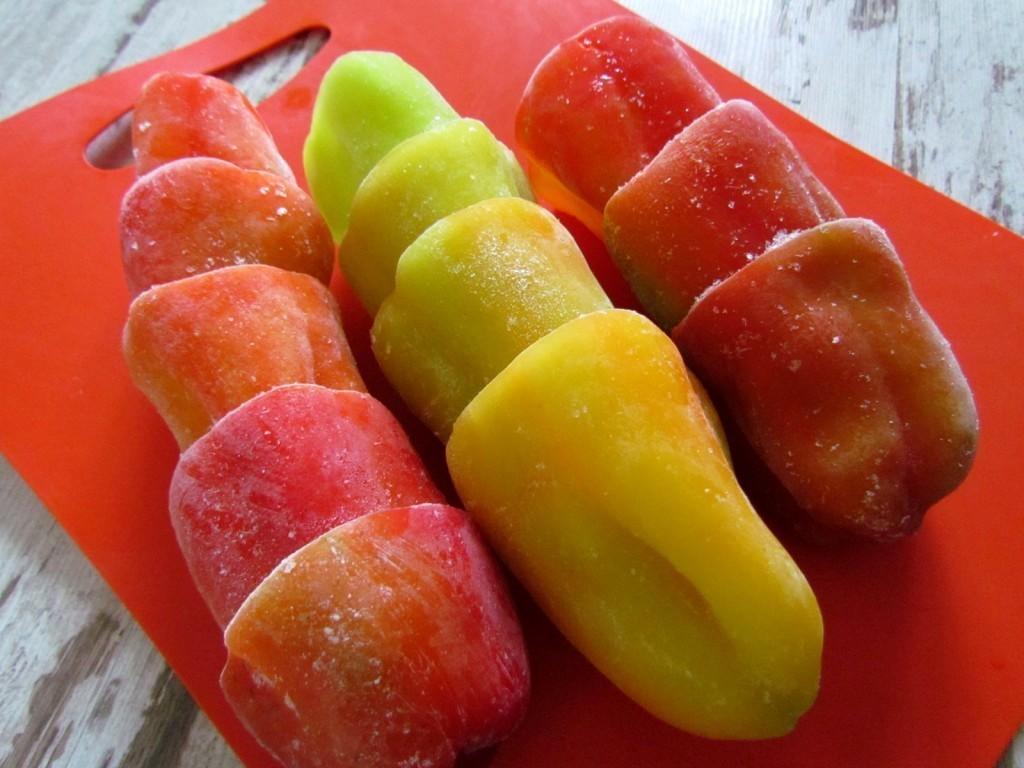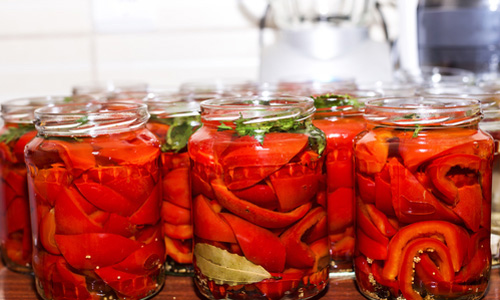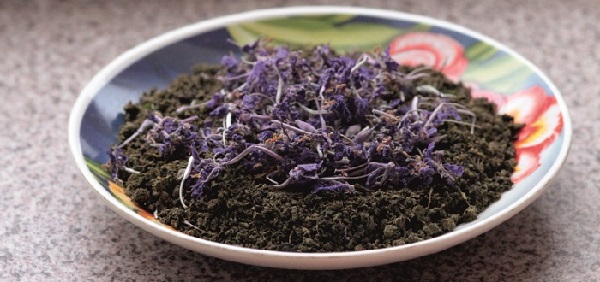How to bake in silicone molds? How to use silicone baking dishes.
Modern housewives have a large selection of baking dishes. Recently, molds made of silicone have attracted more and more attention. Absolutely non-toxic when heated, hypoallergenic material is available in a wide variety of shapes and sizes.
How to choose the right silicone baking dish
Like any other dishes, products made of silicone have their own advantages and disadvantages.
Of the advantages it is worth highlighting:
- Compact storage. The product is easy to fold. This saves storage space.
- Ease of care. Easy to wash, as there are no hard-to-reach spots.
- Does not require oiling.
- Easy to extract even the most fragile baked goods.
- The baking process itself is much faster than in dishes made from other materials.
- Many people get used to the soft walls and the bottom of the dishes quite hard. If you do not first install it on a solid base, you can spill the product when moving it.
- The dishwasher is not always able to completely wash the product. At the same time, a manual wash easily eliminates this drawback.
- In order for silicone utensils to serve for a long time, and not disappoint the hostess with poor-quality baked goods, a few simple rules should be followed.
- After purchase, the container must be thoroughly washed with soapy water with a sponge before use. It can be coated with a thin layer of chemical composition and must be removed.
- After use it is enough to wipe with a napkin and rinse well with water.
- Silicone does not tolerate contact with an open flame.
- Store the product separately from sharp objects. Even slight contact with the tip of the knife can permanently damage the surface.
Comparison of the best silicone molds.

Silicone dishes are produced in various shapes and sizes.
This is due not only to aesthetic reasons, but also to the different purposes of this or that capacity:
- For cupcakes. There are small and large sizes, depending on the desired weight of the finished product. In large forms, the diameter of the bottom reaches 17 cm in diameter. The best manufacturers are Mayer & Bosh and Tescoma. Small molds are available in size about 8 cm. Their height does not exceed 9 cm. Popular manufacturers - Mayer & Bosh and Horse.
- For cakes. There are two types: detachable and solid. Detachable in design are no different from metal counterparts. It is recommended to buy products from Lurch, Bradex. Tescoma and Pyrex are rightfully considered to be the leaders among manufacturers of integral forms. Their price and production quality are comparable.
- For baking cookies. They are popular for baking, which does not require rolling. Gingerbread is especially good there. The most popular cookware companies: Silikomart and Best Home Kitchen.
- For baking bread. The rectangular design is smooth inside. Popular manufacturers: Mayer & Bosh, Oursson and Fissman.
Is it necessary to lubricate the silicone mold with oil
Silicone has a pronounced non-stick property, so you can not use fat for baking. However, at the first baking, it is still necessary to lubricate the form. Without this, the non-stick effect will not work as expected.In the future, the use of oil or any other fat will depend on the quality of the purchased form and the desire of the hostess.
It is important to remember two rules:
- Use only flavourlessly.
- If the form has been washed with any detergents, re-treatment with fat is necessary, as the non-stick effect is lost.
How to bake in silicone mold? The Basics of Successful Baking

Baking in silicone form is very convenient, but you need to consider several important nuances in which it differs from ordinary dishes.
Silicone utensils are allowed to be used in ovens operating both from gas and from electricity. It does not lose its properties and does not collapse in a wide temperature range: from -40 ° C to 230 ° C. It is not advisable to heat it to higher values, since the process of emission of harmful substances into the product begins.
Due to the soft structure, the empty container should first be installed on a solid plate or tray, and only then pour the dough into it.
For convenience, it is advisable not to use forms with too curly surface. Products baked in this form are beautiful in shape, but the process of extracting them is difficult. After approximately 500 pastries, the product is recommended to be replaced. Also the use of such dishes has a number of limitations.
Prohibited:
- Heat empty dishes in the oven.
- Preheat finished baked goods by placing them in a silicone container.
- Install on open fire.
How to remove baking from a silicone mold
Ready-made baked goods are quite easy to remove from a silicone container. To remove the finished dough form, it is enough to bend with the edge. To facilitate the process, do not use knives, forks or other foreign objects that could damage the container.How and how to wash a silicone mold

Silicone dishes are easy to clean. After baking, it is enough to wipe it with a paper towel from the remnants of food and rinse with cold water. For more thorough care, it is allowed to use dishwashing detergents without the inclusion of abrasive particles. It can also be washed in a dishwasher.
Can I use a silicone baking dish in the microwave?
Some housewives love to bake in the microwave. Baking is especially good in devices equipped with convection mode. Silicone cookware is perfect for this. It is enough to follow all the rules that apply to a conventional oven.No storage problems (can be folded in half and rolled up into a tube); the product is easily taken out of the form (just turn the last inside out); 100% non-stickiness - lubrication with oil or fat is not required (“butter” is necessary only once, the very first time); the baking process is faster than in conventional metal or ceramic counterparts. And what a beauty laid down by designers at the bottom of the molds ...
It is no accident that silicone molds are deservedly an obligatory attribute of the “gentleman's set” of housewives for the kitchen. However, in order not to be mistaken with the choice of the product and know exactly how to use it for the first time, some features should be taken into account.
How to choose a silicone baking dish
The abundance of options on store shelves should not mislead potential shoppers who base their choice on visual criteria only. It is much more important to pay attention to the quality of the silicone itself.
- Technical silicone is made from cheap materials using harmful coloring substances that, when heated, react with food and can harm health.
- Medical silicone meets all the requirements of food equipment and does not pose a threat even to the child's body.

How to determine the quality of silicone
- The main way to determine the safe silicone form is the smell emanating from it. An unpleasant chemical or rubber aroma (and not only in the cold state, but also when heated) should warn against buying.
- Another true quality criterion is the return of the mold to its previous state without whitish traces after bending.
- Finally, as mentioned above, bright acid shades are probably produced by harmful dyes, so it is better to opt for natural and light colors of molds.
How to use silicone molds
Question: Can I use immediately after purchase?
- Answer: After purchasing, the mold must be thoroughly washed and dried.
Question:do I need to lubricate a silicone baking dish?
- Answer:before the first baking, smear the entire surface with vegetable oil and let it brew for 15 to 20 minutes.
Question:how to put in the oven?
- Answer:silicone should be placed in an oven on a flat surface, ideally it should be refractory glass or ceramic.
Question: Are there any restrictions in the temperature regime?
- Answer:do not heat the mold over 250 degrees and cool below 60.
Question: Is it possible to take out the baked goods immediately?
- Answer:after the product is ready, the mold must be left to rest again on a flat surface until it cools, and then, slightly bending the edges, remove the baked goods intact.

Unfortunately, many do not know how to use silicone baking dishes. There is nothing complicated. Let's look at all the nuances of this straightforward business.
Before first use
It is necessary to perform several mandatory steps before using silicone baking dishes for the first time. First, wash the molds thoroughly. They may have dust and dirt, which you do not need. Then dry the silicone mold so that there is absolutely no moisture left after washing. The next step is to oil. Lubricate the entire inner surface. This will improve the non-stick properties of silicone. Rub all corners and edges evenly, excess oil can be drained or wiped, a lot of it is not necessary. Leave the silicone mold so that the oil is slightly absorbed and dried. All! Preparation for first use is complete!
How to use silicone baking mold
If you have completed all the preparatory steps before the first use, then the silicone molds no longer need to be lubricated with oil or grease. They are ready for baking. If you plan to bake a large cake or pie, the form can be slightly moistened with plain water.
Before pouring dough, place the mold on a metal pan or wire rack. The silicone mold is flexible, so after pouring the dough it will be difficult to move without a supporting metal tray. Baking can be placed in a cold or preheated oven, as the recipe for your dish requires. Watch out for temperature conditions. Silicone is afraid of too high temperature and open exposure to fire. The mold may melt; use carefully. Read more on the packaging of your product.
Should knowthat in most cases, baking in silicone mold will cook a little faster than in steel molds. Do not forget to monitor the readiness!
![]()
Warning! Silicone is easy to cut or puncture. Do not use knives and forks with the mold. Better take wooden, plastic or silicone spatulas.
After cooking the mold and baking, you need to allow time to cool slightly, so that the finished baking is easier to get out of the mold and does not come apart. Five minutes is enough for a small silicone mold. If everything is done correctly, then baking will almost not stick to the walls and will slip out without problems. You can try bending the edges of the mold a little to make sure that the pastries do not stick.
In almost every family there is at least one sweet tooth who loves pastries. And far from always, such gourmets agree to be content with purchased goodies. That is why many housewives are forced to cook biscuits, muffins, muffins, casseroles and various portioned desserts.
Silicone molds are able to significantly ease their work. These products have a number of positive properties. However, in order to appreciate them, you need to know exactly the rules for using such "rubber dishes." For example, it is recommended that you figure out in advance how to bake in silicone form or how to freeze foods in it.
How to make the right choice?
A wide range of silicone molds often confuses customers: which one is best to buy? After all, I really want the product not only to be absolutely safe, but also to last for many years. So what should you look for?
- Temperature Range. As a rule, all molds calmly withstand the conditions of a hot oven or freezer. But before buying, it is still recommended to make sure that the limit of thermal stability of the material exceeds the maximum power of the oven or air grill.
- Color. Too bright coloring of the mold often indicates a low quality of the color used in its manufacture. Therefore, it is better to give preference to products of muted tones.
- The form. As a rule, funny figures are more suitable for baking or freezing jelly: bears, roses, etc. But for baking vegetables, fish and other “serious” dishes, it is better to use classic rectangular, square or round “bathtubs”. It should also be borne in mind that the presence of small parts, such as threads, makes it somewhat difficult to wash the mold and remove the finished product from it.
- Smell. High-quality products intended for cooking should not smell.
- Manufacturing firm. The more positive reviews about a particular brand, the higher the chances that the purchased item will last a long time. However, to completely insure against fakes, unfortunately, is almost impossible.
The silicone used for kitchen utensils is inert. It does not absorb food odors, does not emit toxins, does not stick and does not freeze to surfaces. Therefore, wherever the silicone form is located - in the oven, freezer, microwave, slow cooker or hot air grill - you can safely say that it is harmless.
First Date Rules
Before use, the new silicone mold should be thoroughly washed with a mild detergent. This will help remove dust and dirt from its walls that has accumulated there during the production, storage and transportation of the product. Then it must be wiped with a dry towel and greased with animal or vegetable fat.
If the form is washed after use manually, you will no longer need to repeat this operation. Before all other episodes of use, it will only need to be slightly sprinkled with water. But after the contact of the silicone with the dishwasher, the fat film will have to be restored.
For cooking in silicone molds, both gas and electric ovens are suitable. As a support for dishes, you can use a regular baking sheet or wire rack. The latter option is considered by experienced housewives to be preferable, as it leads to a more even distribution of heat.
Place the form on the stand before pouring liquids into it. And carry full dishes should only be with the pallet. Otherwise, the soft walls will not be able to hold the dough or sauce, and some of the contents will be on the floor or table.
Each hostess herself decides whether to lubricate the silicone form with fat before cooking a particular dish. In principle, this is not necessary: \u200b\u200bnothing will burn to the walls or bottom. But to give extra taste to pastries, it is allowed to use butter or margarine. But you can definitely refuse to sprinkle flour on the inner surface of the dishes.
When setting the timer, it should be noted that the cooking process in silicone dishes proceeds faster than in metal, ceramic or any other. At the same time, the range 220-240ºC is considered the most successful temperature for baking. After turning off the heat, you need to open the oven and allow the finished dish to cool slightly. This will make baking extraction easier. As a rule, it is easy to remove the biscuit by slightly tilting the shape to the side. If you encounter difficulties, you can use a wooden or plastic spatula.
Other silicone application options
The versatility of using soft silicone dishes almost knows no boundaries. With its help, you can cook not only pastries or desserts, but also:
- ice, including from decoctions of herbs for cosmetic purposes;
- handmade soap;
- various casseroles (from cottage cheese, vegetables, meat);
- omelets;
- jelly;
- and everything that tells the worldly ingenuity.
At the same time, all “products” will retain their original shape due to the ease of extracting the mass from the soft shell. As a rule, in order to get solid objects - pieces of soap or ice - just push your fingers on the bottom of the cell.
Subtleties of care and storage
With proper use, silicone molds can last 5-7 years. What nuances should be remembered?
- Silicone is afraid of sharp objects. Therefore, knives, forks, hard sponges and abrasive substances should not interact with it.
- To remove a thin layer of dough from the mold, it must be soaked in cool water for 10-15 minutes, and then washed, turned inside out. Such deformation will not do any harm to the dishes and will allow you to remove impurities even from hard to reach places.
- Storage of silicone products requires very little space. Any mold can be safely rolled or rolled into a tube. After the latch disappears, the silicone will return to its original form.
- Qualitative forms do not react to a sharp change in temperature. In other words, even immediately after the freezer, they are allowed to safely place them in the oven or microwave.
- Silicone is afraid of open fire and too hot surfaces. Therefore, it must not be placed on a gas or electric burner. You also need to make sure that he does not come into contact with the heater in electrical appliances.
- To protect the inner surface of silicone dishes from contamination during baking, you can use special paper liners.
- Some forms sometimes darken from the inside out. Do not consider this a defect.
Knowledge of such trifles will make silicone dishes a reliable and loyal assistant in the kitchen for many culinary experiments.
The welcoming hostess always wants to please the household and guests not only tasty and healthy, but also beautiful dishes. It is the attractiveness of desserts, casseroles and decorations prepared using silicone molds that has allowed this dish to become so popular. And the convenience of storing and using soft products only added her advantages in the eyes of housewives, seeking to minimize routine.
How to use silicone baking dishes: nine important rules.
Many housewives have already appreciated the convenience of using silicone forms. Such forms are made of chemically inert silicone, which does not emit harmful substances when heated - it is from this material that medical implants are made.
Of course, if you want to not only use silicone baking dishes, but also be absolutely sure of their safety, buy products from well-known, well-established companies.
All kinds of kitchen utensils are made of silicone - shovels, brushes, potholders, hot coasters and even knives. However, of course, silicone baking dishes of all kinds, sometimes of the most bizarre forms, occupy the palm.
If you are still not among their lucky owners, you probably just don’t know how to use silicone baking dishes. Then read the article and fill the knowledge gap!
Rule 1
Silicone molds, unlike glass and metal ones, are characterized by increased flexibility, so you need to pour dough into them when they are already standing on a baking sheet or wire rack. Otherwise, acrobatic manipulations are inevitable in an attempt not to spill the batter and, as a result, a spoiled mood and dissatisfaction with the form.
Rule 2
Feel free to use silicone molds in any oven - gas, electric, in the microwave. Put them in the freezer too. Such forms can easily withstand temperatures ranging from -40 ° C to + 240 ° C, so they are excellent not only for baking, but also for freezing.
Rule 3
Lubricate the silicone mold before starting to use, manufacturers recommend only once, the very first. I personally did not lubricate, and there were never difficulties with taking out the finished baking. If in doubt and it’s so calmer for you, lubricate the mold before each baking - there will definitely be no harm from this. Do not forget to wash it with a mild detergent just before you start using the silicone mold.
Rule 4
Please note that the baking time in silicone molds is almost the same as in conventional ones. At least I didn’t feel any difference. Note also that the crust is formed only on top, the bottom of the baking is moist.
Rule 5
Remove the baked goods from the mold, allowing it to pre-stand for five to seven minutes. Then just tilt the shape to the side - the finished baking itself will fall out of the mold without any efforts on your part. If the baking is still sticking and cannot be taken out - bend the edge of the mold outward, since silicone allows you to do this without any problems. First, pick up the adhered cupcake or cake from the side with a silicone or wooden spatula. Do not use metal knives or forks to extract the baked goods - pierce the “one at a time” shape.
Rule 6
Feel free to use silicone molds not only for baking pies and muffins, but also for cooking dishes of meat, fish, vegetables. Naturally, in this case, choose a round, rectangular or square shape.
Rule 7
When buying, choose silicone molds with a minimum of decor, with smooth, even edges without small “threads”. Otherwise, problems may arise both with removing the finished baking from the mold, and with the subsequent washing of this “thread”.
Rule 8
Although baking in a silicone mold does not burn, anyway, after removing it, a thin layer of dough remains on the walls of the mold. To wash this layer, pre-soak the mold for five to ten minutes in cool (this is important!) Water. Then carefully turn the mold inside out and rub it lightly with a soft sponge - the rest of the dough will leave even the smallest grooves without problems. Do not use hard abrasives.
Rule 9
When storing, bend the silicone molds as you like, turn them into a tube, shove them into narrow cabinets and into the far corners of the shelves - they will not hesitate, do not deform and will take their original form instantly.
These are the basic rules that you need to know before you start using a silicone baking dish - as you can see, there are not very many of them and they are all quite simple.









